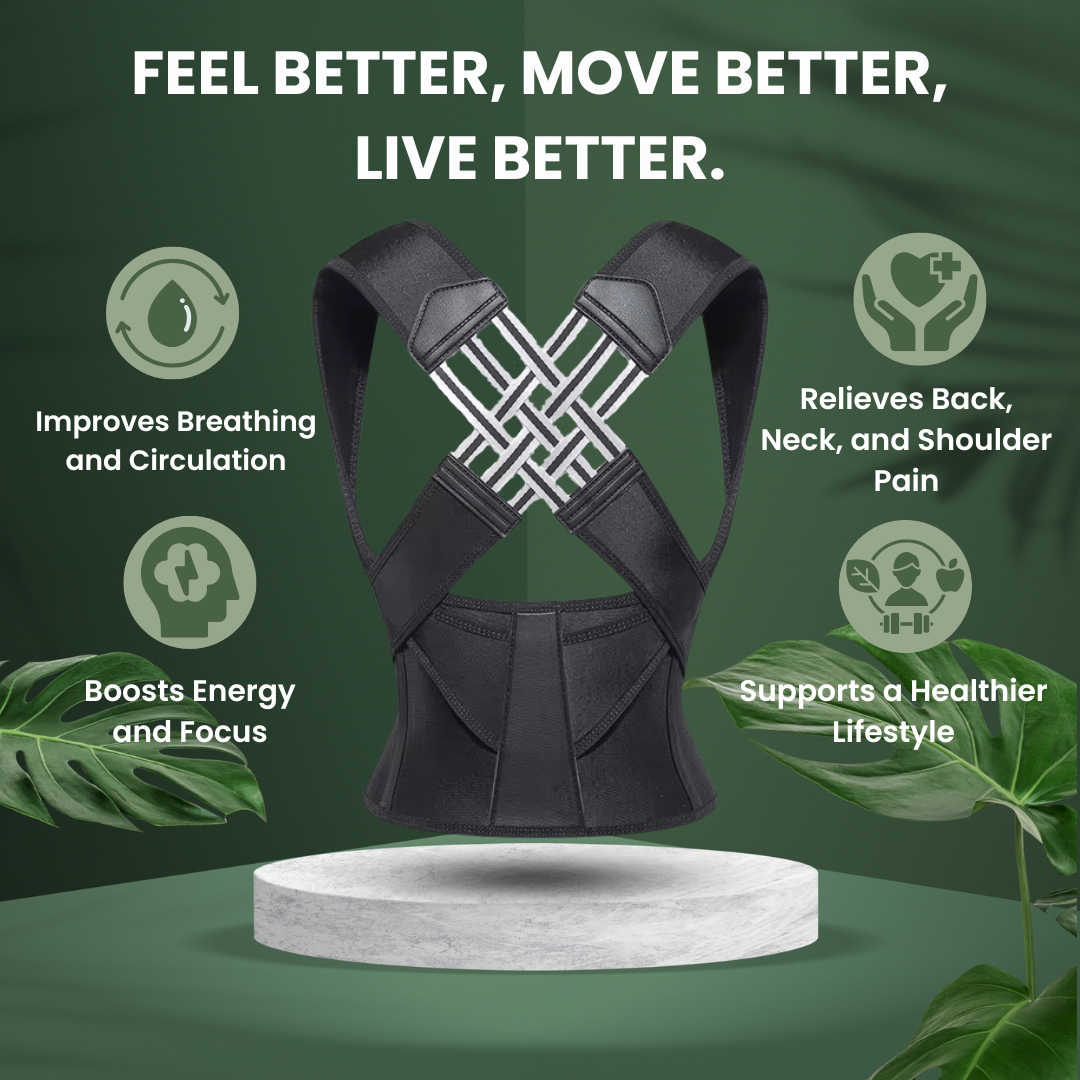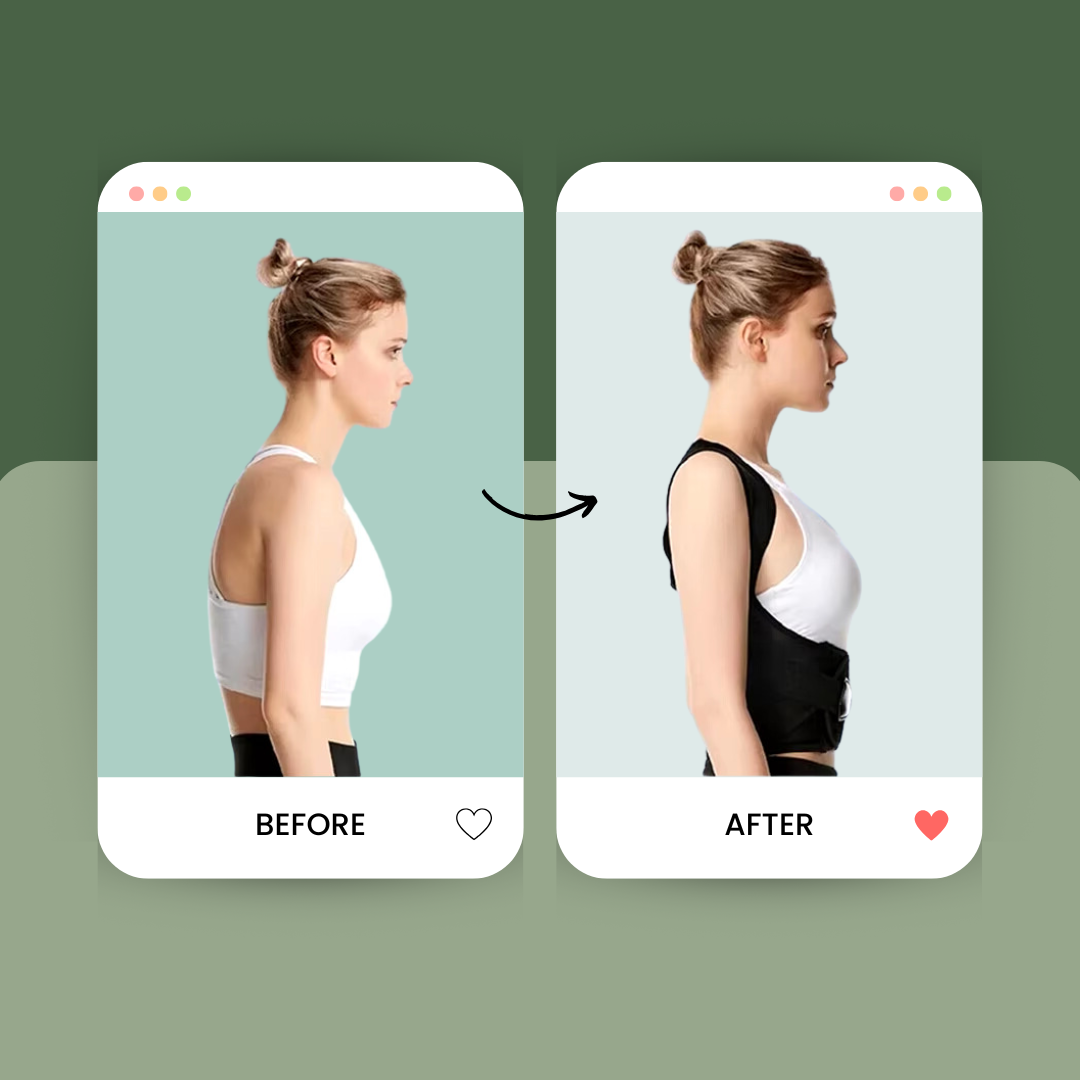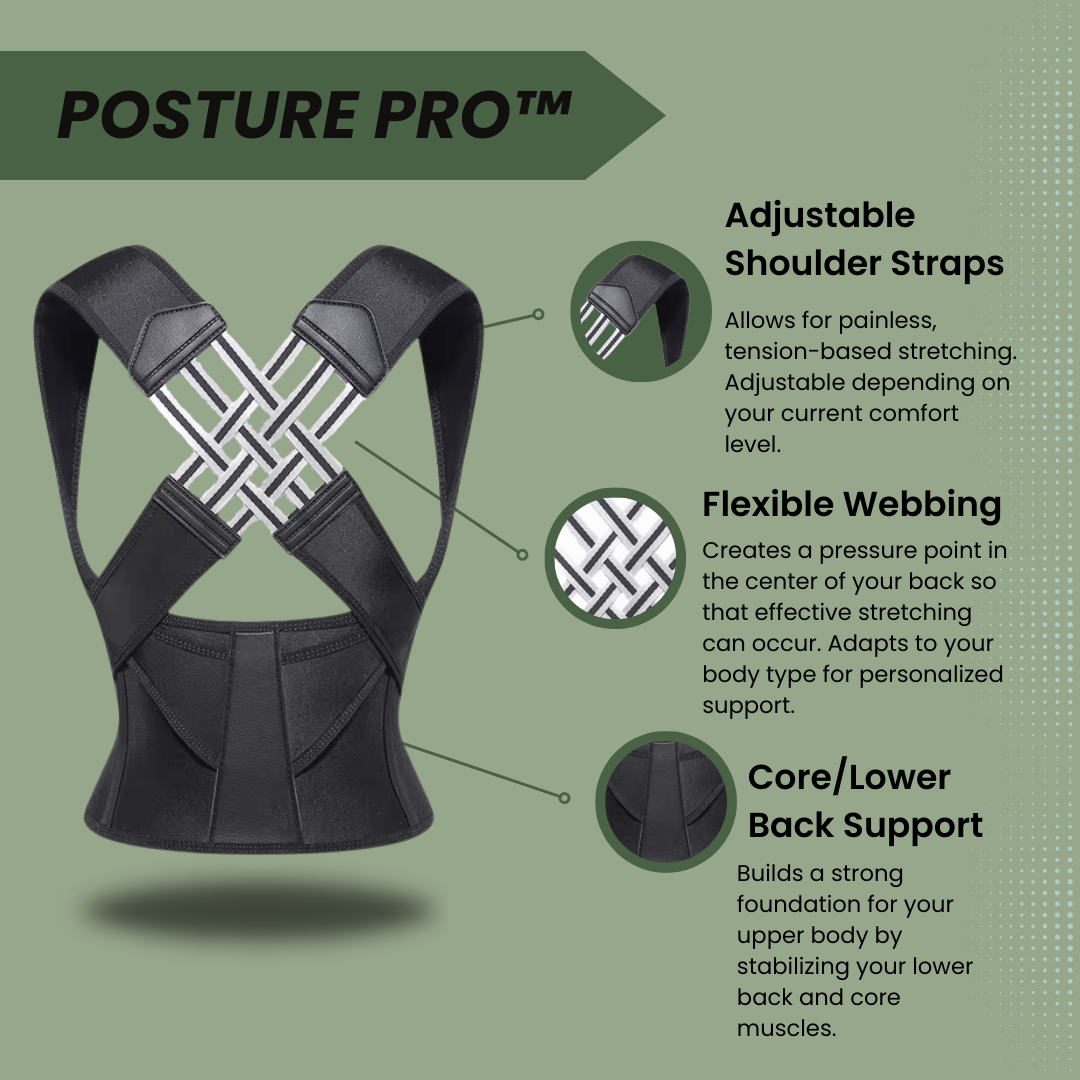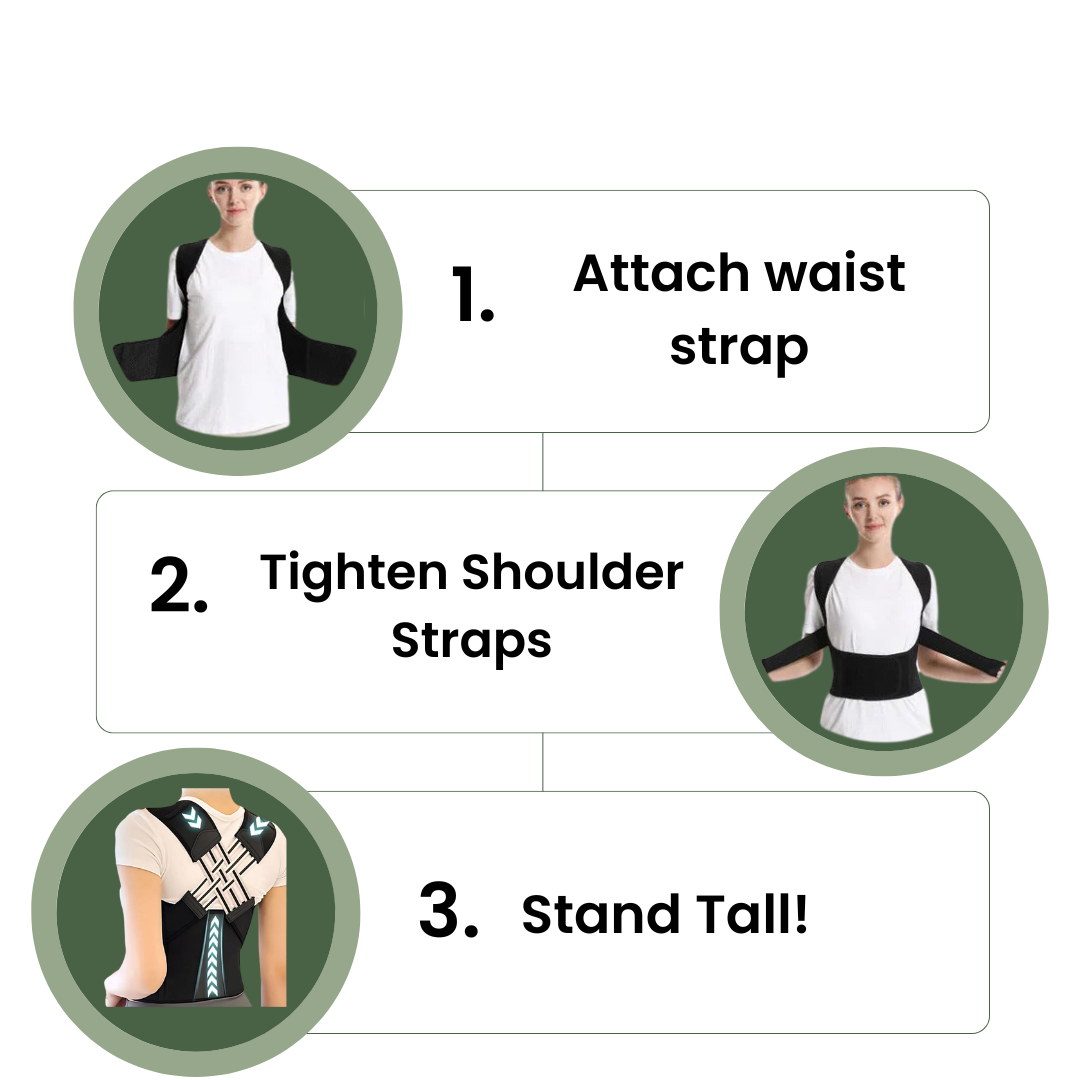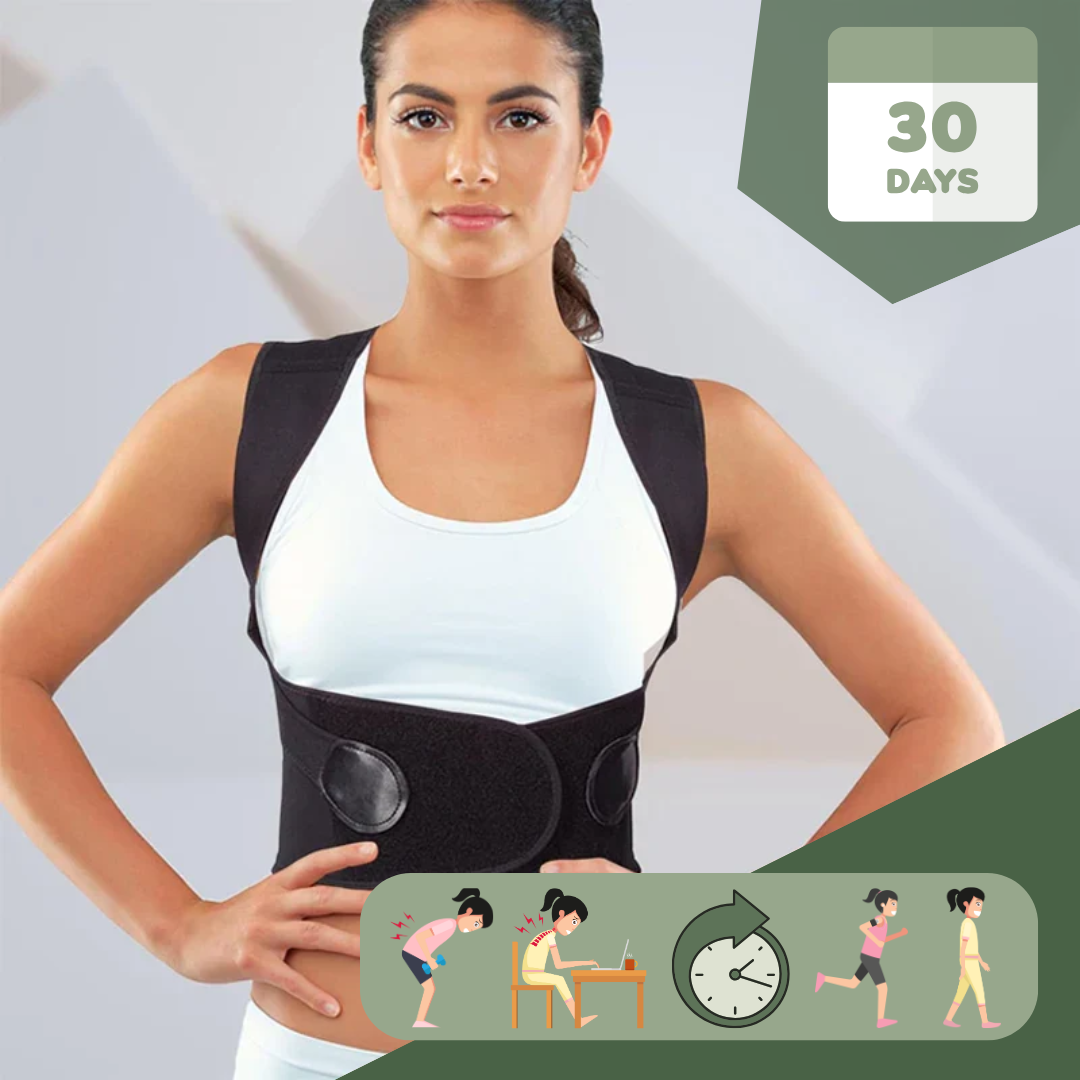Lots of people want to fix their bad posture. Good posture stops muscle and joint pain. This article will show you some "Posture Improving Lifestyle Changes". Let's start!
Key Takeaways
- Taking breaks every 30 minutes from sitting and moving around cuts down on neck and back pain. Office workers who move often have much less pain.
- Sitting with both feet on the ground and keeping a straight spine helps your back. Standing tall like there's a string pulling you up improves posture.
- Exercises that make your core and back stronger support good posture. Stretching makes you more flexible, which is also good for posture.
- Ergonomic chairs and desks help keep your spine in line. This means less muscle strain.
- Posture correctors remind us to keep our shoulders and back straight, easing muscle tension.
Understanding the Importance of Good Posture
Good posture is crucial for our health. It keeps muscles, bones, and joints in the right shape. This helps prevent pain and muscle strain. Astrid DiVincent, a physical therapist, says good body alignment makes us feel and work better.
Body alignment affects how we feel and function. - Astrid DiVincent
When our bodies are not lined up correctly, we can get hurt more easily. Our spine gets weak when it's not straight. This increases the risk of injury. Bad posture also leads to pain in the neck, shoulders, and back.
It can make it hard to move around freely and increase chances of falling down because our balance is off.
Everyday Habits to Improve Posture
To improve your posture, take regular breaks from sitting and stretch to release muscle tension. Ensure proper sitting and standing techniques are practiced throughout the day, which will help in spine alignment.
Use ergonomic furniture to support better posture and minimize muscle strain.
Take regular breaks from sitting
Sitting for long hours, like 10 at a desk, can lead to pain. Even with the best chair, your body needs to move. Experts say you should check how you sit every 15 minutes. Every half hour, get up and move around.
This helps stop neck and low-back pain.
Studies show that taking short breaks for movement cuts down on pain. Office workers who stood up and moved had 55% less neck pain and 66% less back pain. Only 9% of them started having low-back pain, unlike 33% who kept sitting all day.
Moving often keeps your muscles from getting tired and sore.
Practice proper sitting and standing techniques
To keep your spine happy, sit with both feet on the ground. Your knees should make a right angle. Tuck your chin slightly and draw your shoulder blades toward each other. This position supports your back well.
For standing, imagine a string pulling you up from the top of your head. Stand tall, pull shoulders back, and tighten your stomach muscles. Most of your weight should be on the front part of your feet.
Good posture is not just about looking confident; it's about taking care of our body's foundation.
Checking how you stand or sit every 15 minutes can stop bad habits early on. Move around every 30 minutes to help fight muscle fatigue from staying in one spot too long. And when you're at a desk, keep that computer screen right at eye level to avoid bending forward too much.
Use ergonomic furniture
Ergonomic furniture is essential for maintaining good posture and reducing bodily strain. Chairs equipped with lumbar support can alleviate lower back strain, while adjustable desks allow for proper height settings to maintain ergonomic alignment.
Ensuring work surfaces are at a comfortable height also contributes to better posture and reduces the risk of muscle fatigue and tension.
Incorporating ergonomic furniture into your daily routine promotes spine alignment and supports core stability, which are vital for improving posture and overall physical health. By investing in such tools, individuals can create an environment that prioritizes their well-being while engaging in various activities that require prolonged periods of sitting or standing.
Exercises to Support Better Posture

Strengthen your core and back muscles with targeted exercises; these can help improve posture and reduce strain. For more in-depth guidance on posture-improving exercises, continue reading.
Strengthening the core and back muscles
Strengthen your core and back muscles to support better posture. Focus on exercises like scapula squeezes, resistance band rows, and modified planks. These activities can effectively enhance muscle endurance and reduce functional disability for those with chronic low back pain.
A study comparing core-strengthening exercises (CSE) and intensive dynamic back exercises (IDBE) found that CSE was more effective in improving muscle endurance and reducing functional disability.
Both CSE and IDBE showed no significant differences in pain reduction or core extensor endurance. For comprehensive management of low back pain, prioritize physical exercise focused on strengthening the core and back muscles to improve postural alignment.
Incorporating these exercises into your routine will greatly benefit your overall physical health.
Stretching to increase flexibility
Stretching is essential for improving flexibility, which contributes to good posture. Key stretching exercises include the Child’s Pose, Forward Fold, Cat-Cow, and Downward-Facing Dog.
Consistency in stretching practice is vital for enhancing flexibility and posture. Proper stretching reduces stress on muscles and ligaments, lowering the risk of injury. Moreover, it can help improve emotional well-being and body image by reducing muscle tension and promoting relaxation.
By consistently integrating these stretches into your routine, you can strive to increase flexibility while also supporting your overall physical health.
The Role of Posture Correctors
Posture correctors can help improve your posture by offering gentle support and reminding your body of proper alignment. Consider these devices to discover the secrets of better posture.
Gain a deeper understanding of how they work.
How posture correctors can assist
Posture correctors can positively impact your physical health by promoting better posture and aligning your shoulders and spine. This can relieve strain on muscles and ligaments, lessening discomfort in the neck, shoulders, and back.
Through proper use of posture correctors, you may also observe a reduction in tension headaches and improved breathing capacity. Furthermore, these tools can contribute to a more positive mood and increased energy levels, complementing other lifestyle changes such as core-strengthening exercises and ergonomic workstations.
Incorporating these devices into your routine can be advantageous for overall physical health. They help the body maintain proper posture, potentially decreasing discomfort related to poor posture while preventing injury or strain from prolonged periods of incorrect positioning.
Tips for choosing the right posture corrector
When choosing a posture corrector, consider which type suits your activities. Whether it's braces, shirts, or high-tech devices, match the corrector to what you do. Comfort and effectiveness go hand in hand - ensure a proper fit for both.
Evaluate the support level provided by the corrector; more robust activities might need stronger support. Quality matters - choose durability alongside performance when selecting a posture corrector.
Consult with professionals before making any decisions about using postural aids. They can guide you toward the best option for your needs. Wearing the corrector later in the day can combat fatigue-related slumping effectively due to muscle fatigue at that time.
Conclusion
In short, maintaining good posture is vital for overall physical health and well-being. By integrating small lifestyle adjustments such as taking frequent movement breaks, practicing proper sitting and standing techniques, and participating in exercises to strengthen core and back muscles, individuals can significantly enhance their posture.
Also, using ergonomic furniture and posture correctors can help support better spine alignment. It's important to note that poor posture can result in various muscular and skeletal issues, but with consistent effort and awareness of body positioning, positive changes are achievable.
Strengthening exercises and stretches are pivotal components for attaining better posture while also lessening the risk of muscle fatigue, tension, and pain.
FAQs
1. What is good posture and why is it important for physical health?
Good posture involves aligning the body in a manner that reduces muscle strain and tension. It's crucial for physical health as it prevents back pain, rounded shoulders, and forward head posture which can result from poor spine alignment.
2. How can I improve my sitting and standing posture?
Improving your sitting and standing posture requires body awareness. When sitting, ensure your back muscles are relaxed with your shoulder blades pulled slightly together. While standing, keep your abdominal muscles engaged to support spinal cord alignment.
3. Can exercises help in improving my posture?
Yes! Strengthening exercises targeting core muscles like abdominals can greatly improve your posture by enhancing muscle strength. Stretching exercises also relieve muscle fatigue while promoting flexibility of tendons and skeletal muscle fibres.
4. Are there specific lifestyle changes I should adopt to maintain good posture?
Indeed! Taking frequent movement breaks helps avoid muscle weakness from staying in one position too long; this is especially true if you're prone to slouching at a browser or desk job all day!
5. Can wearing high heels affect my postural balance?
Yes, high heels can cause pelvic tilt leading to poor spine alignment over time; hence affecting postural balance negatively - consider weight loss if necessary or seeing a physical therapist for professional guidance on maintaining good postural habits.
6.Can yoga aid in achieving better body alignment?
Absolutely! Yoga postures engage various muscle groups including upper arms, wrists, and butt besides core muscles such as abdomen providing an overall workout that promotes better body alignment.








